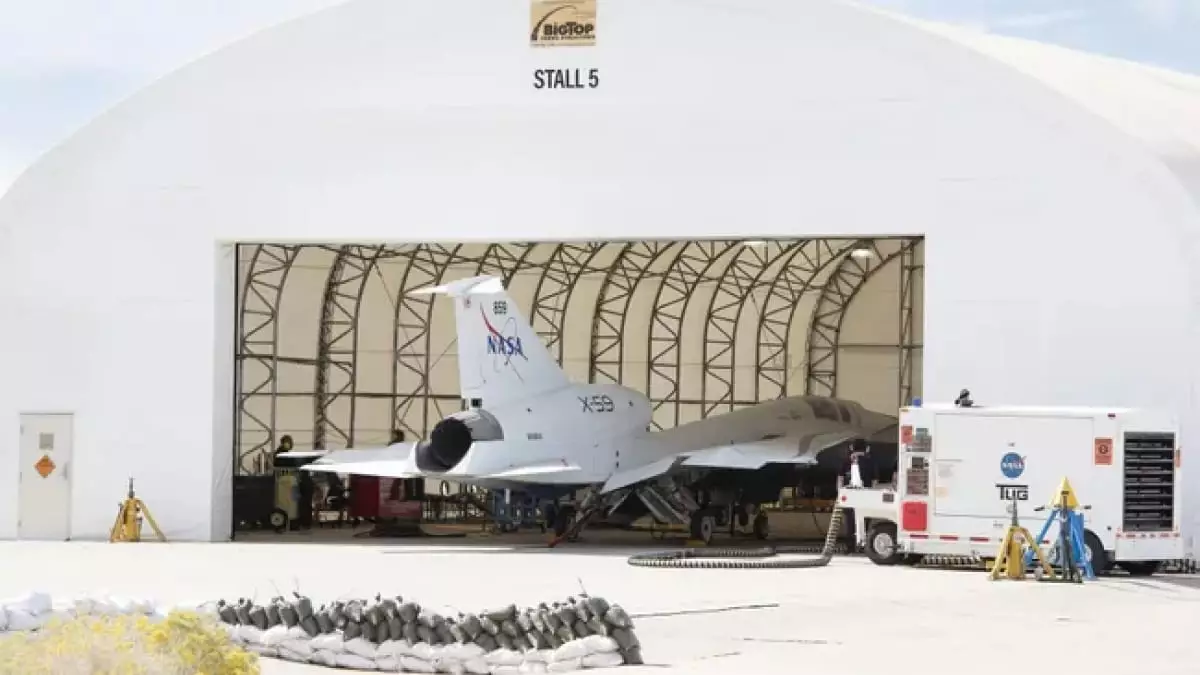NASA is making significant strides in the realm of supersonic aviation with its X-59 aircraft, which is poised to redefine the sound profile associated with breaking the sound barrier. The experimental X-59 Quiet SuperSonic Technology (Quesst) aircraft recently achieved a landmark milestone with the successful ignition of its engine for the first time. This critical development phase, carried out at Lockheed Martin’s Skunk Works facility in Palmdale, California, represents a culmination of extensive engineering efforts aimed at making supersonic travel more acceptable to the public.
Since late October, engineers have meticulously executed phased engine tests to validate the performance and system integration of the X-59. Though an official timeline for the aircraft’s inaugural flight remains uncertain, the engine testing forms a cornerstone in this timeline. The initial tests began with low-speed runs to check for leaks and confirm that essential systems, including hydraulic and electrical components, operated properly. This cautious approach underscores the importance of rigorous testing before progressing to more complex flight operations.
Jay Brandon, the chief engineer overseeing the X-59 project at NASA, has referred to these engine tests as a “warmup.” This stage involves assessing not only the engine’s operation but also the intricate interplay between the engine and critical aircraft systems. The X-59 is powered by a modified F414-GE-100 engine, a variant of the engines employed in the Navy’s Boeing F/A-18 Super Hornet, ensuring it is equipped with proven technology.
Pioneering Sound Reduction Technology
A hallmark feature of the X-59 is its ability to produce notably lower sound emissions compared to traditional supersonic aircraft. NASA has leveraged data from F/A-18 jets to create a simulation of the X-59’s unique sound profile, aiming to mitigate disruptive sonic booms. Designed to cruise at Mach 1.4 and reach an altitude of 55,000 feet, the X-59 boasts a long, streamlined nose that measures over 11 meters. This innovative design is central to minimizing sonic booms, transforming what would be a thunderous event into a mere “thump,” a sound that could potentially enable supersonic travel over densely populated areas.
In January 2024, NASA unveiled the X-59’s unconventional cockpit design, which is devoid of a traditional forward-facing window. To adapt to this unique setup, the aircraft employs an “eXternal Vision System,” allowing pilots to maintain situational awareness through a digital display that fuses multiple camera feeds with augmented reality. This forward-thinking technology counteracts the visibility constraints imposed by the aircraft’s aerodynamic structure, ensuring pilots are well-informed and safe during operations.
As testing progresses, upcoming phases will focus on evaluating the aircraft’s adaptability to various simulated flight scenarios and include essential taxi tests to confirm smooth ground operations. After these critical evaluations, the X-59 is expected to fly over selected U.S. cities to assess public reactions to its quieter flight profile. The data collected will provide valuable insights to NASA as it endeavors to set a precedent for quieter, noise-reduced supersonic flights, a venture aimed at ushering in a new era of commercial aviation. With ongoing advancements in technology and design, the X-59 could become a pivotal player in the future of sustainable supersonic travel.


Leave a Reply